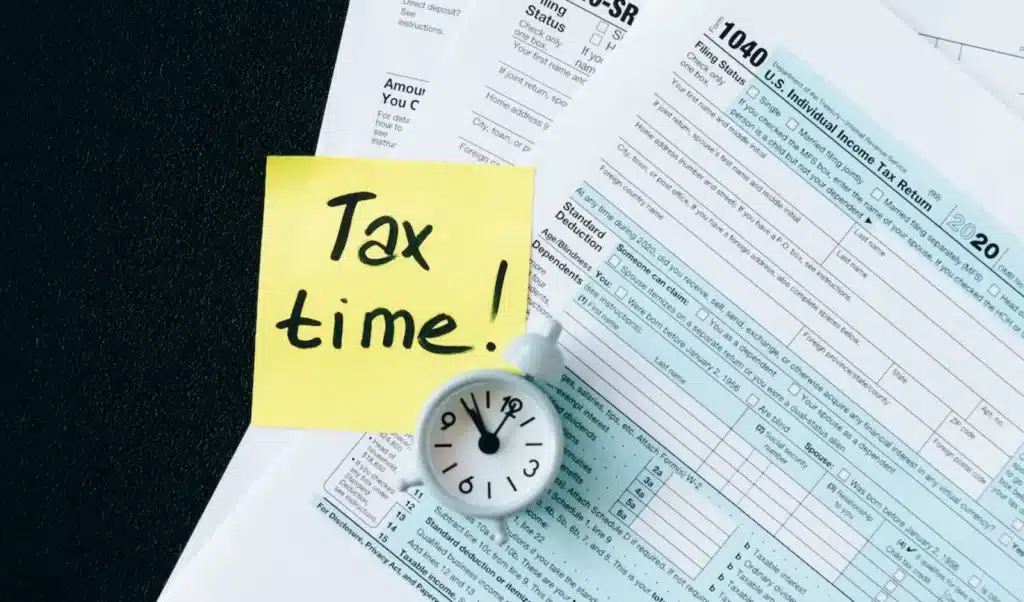As the year 2024 approaches, it’s important to understand how the IRS income tax brackets will affect your taxes. The IRS (Internal Revenue Service) is responsible for collecting federal income taxes in the United States. These taxes are used to fund government programs and services, such as national defense, education, and healthcare.
In this article, we’ll dive into the details of the 2024 IRS income tax brackets and how they may impact your tax liability.
What Are Income Tax Brackets?
Before we dive into the specifics of the 2024 IRS income tax brackets, let’s first define what income tax brackets are. Income tax brackets are a range of income levels that determine the tax rate you will pay on your income. The United States has a progressive tax system, which means that the more money you earn, the higher your tax rate will be.
For example, if you fall into the 10% tax bracket, you will pay 10% of your income in taxes. If you fall into the 24% tax bracket, you will pay 24% of your income in taxes. This system ensures that those who earn more money pay a higher percentage of their income in taxes.
How Are Income Tax Brackets Determined?
The IRS income tax brackets are determined by your filing status and your taxable income. Your filing status is determined by your marital status on the last day of the tax year. The five filing statuses are single, married filing jointly, married filing separately, head of household, and qualifying widow(er) with dependent child.
Your taxable income is your total income minus any deductions and exemptions. Deductions are expenses that can be subtracted from your income, such charitable donations. Exemptions are a set amount of income that is not subject to taxes, such as the personal exemption for yourself and any dependents.
2024 IRS Income Tax Brackets
Now, let’s take a closer look at the 2024 IRS income tax brackets. These brackets are based on the Tax Cuts and Jobs Act (TCJA) that was passed in 2017 and went into effect in 2018. The TCJA made significant changes to the tax code, including adjusting the income tax brackets.
Single Filers
For single filers, the 2024 income tax brackets are as follows:
- 10% tax rate: $0 to $9,950
- 12% tax rate: $9,951 to $40,525
- 22% tax rate: $40,526 to $86,375
- 24% tax rate: $86,376 to $164,925
- 32% tax rate: $164,926 to $209,425
- 35% tax rate: $209,426 to $523,600
- 37% tax rate: $523,601 and above
Married Filing Jointly
For married couples filing jointly, the 2024 income tax brackets are as follows:
- 10% tax rate: $0 to $19,900
- 12% tax rate: $19,901 to $81,050
- 22% tax rate: $81,051 to $172,750
- 24% tax rate: $172,751 to $329,850
- 32% tax rate: $329,851 to $418,850
- 35% tax rate: $418,851 to $628,300
- 37% tax rate: $628,301 and above
Married Filing Separately
For married couples filing separately, the 2024 income tax brackets are as follows:
- 10% tax rate: $0 to $9,950
- 12% tax rate: $9,951 to $40,525
- 22% tax rate: $40,526 to $86,375
- 24% tax rate: $86,376 to $164,925
- 32% tax rate: $164,926 to $209,425
- 35% tax rate: $209,426 to $314,150
- 37% tax rate: $314,151 and above
Head of Household
For those filing as head of household, the 2024 income tax brackets are as follows:
- 10% tax rate: $0 to $14,200
- 12% tax rate: $14,201 to $54,200
- 22% tax rate: $54,201 to $86,350
- 24% tax rate: $86,351 to $164,900
- 32% tax rate: $164,901 to $209,400
- 35% tax rate: $209,401 to $523,600
- 37% tax rate: $523,601 and above
Qualifying Widow(er) with Dependent Child
For qualifying widow(er) with dependent child, the 2024 income tax brackets are as follows:
- 10% tax rate: $0 to $19,900
- 12% tax rate: $19,901 to $81,050
- 22% tax rate: $81,051 to $172,750
- 24% tax rate: $172,751 to $329,850
- 32% tax rate: $329,851 to $418,850
- 35% tax rate: $418,851 to $628,300
- 37% tax rate: $628,301 and above
How Do Income Tax Brackets Affect Your Taxes?
Now that you understand the 2024 IRS income tax brackets, you may be wondering how they will affect your taxes. It’s important to note that your tax bracket does not determine the overall amount of taxes you will pay. Instead, it determines the tax rate you will pay on the portion of your income that falls within that bracket.
For example, if you are a single filer with a taxable income of $50,000 in 2024, you will fall into the 22% tax bracket. However, you will not pay 22% on your entire income. Instead, you will pay 10% on the first $9,950, 12% on the next $30,575, and 22% on the remaining $9,475.
How Can You Lower Your Tax Bracket?
There are several ways you can lower your tax bracket and potentially reduce your tax liability. One way is to take advantage of tax deductions and credits. Deductions reduce your taxable income, while credits directly reduce the amount of taxes you owe.
Some common deductions and credits include:
- Charitable donations deduction
- Child tax credit
- Earned income tax credit
Another way to lower your tax bracket is to contribute to a retirement account, such as a 401(k) or IRA. These contributions are tax-deductible and can lower your taxable income. It’s always advisable to seek assistance from a professional tax attorney.
News
The IRS is cracking down on fraudulent claims related to the Employee Retention Credit (ERC), intended to aid businesses during pandemic shutdowns. With initiatives underway, $225 million has been retrieved from businesses voluntarily returning credits they thought they received in error. Over 1,800 small businesses have withdrawn $251 million in unprocessed claims, while audits have led to $572 million in assessments from over 12,000 businesses. IRS Commissioner Danny Werfel expresses concern over widespread abuse but notes progress in helping misled businesses. Though new claims processing halted in September, it’s expected to resume this spring, with $3 billion under IRS Criminal Investigation.
Conclusion
Understanding the 2024 IRS income tax brackets is crucial for planning your finances and preparing for tax season. Remember, your tax bracket does not determine the overall amount of taxes you will pay, but it does determine the tax rate you will pay on your income. By taking advantage of deductions and credits and contributing to retirement accounts, you may be able to lower your tax bracket and reduce your tax liability. For any queries or legal assistance, feel free to contact us.












